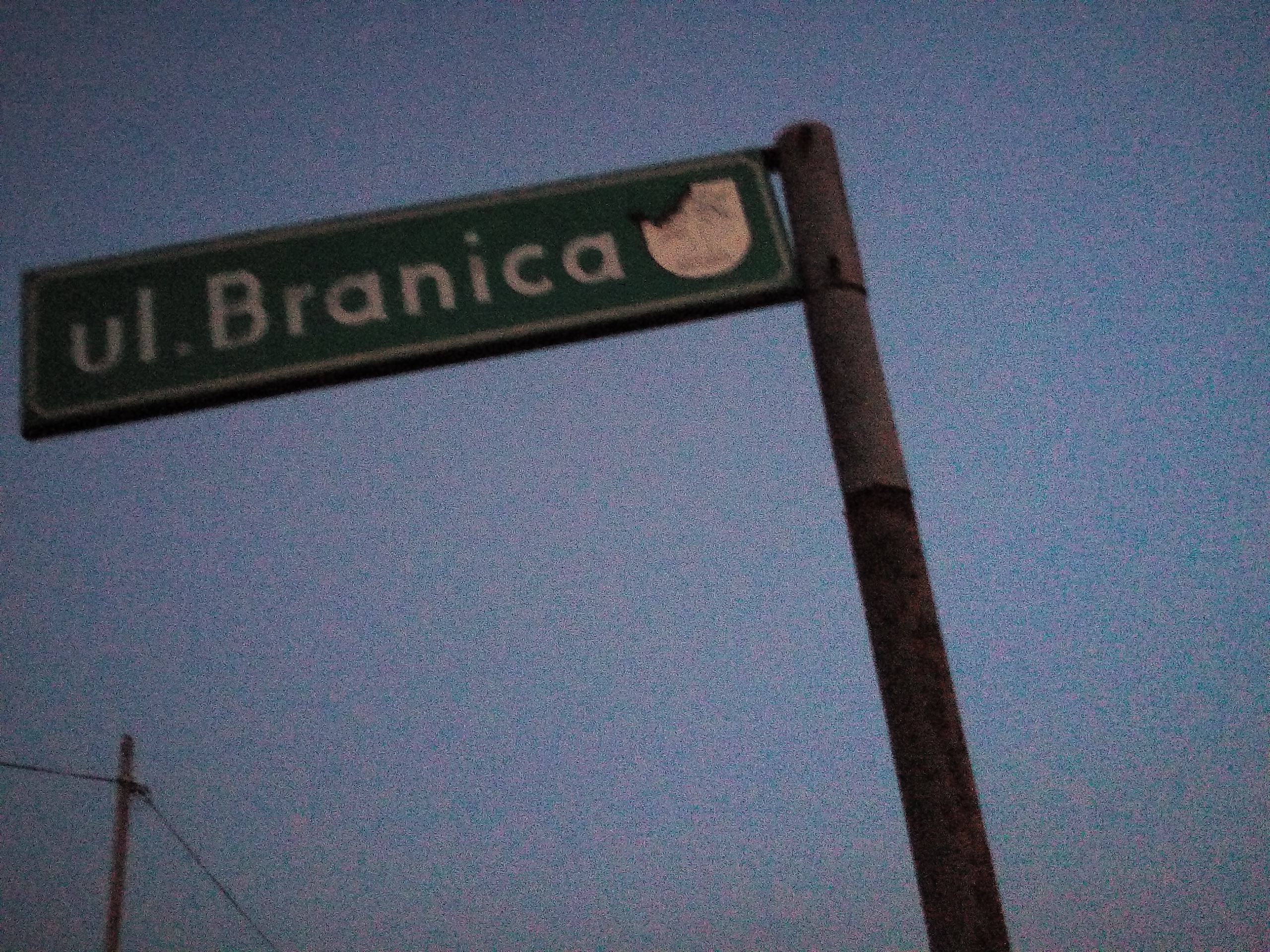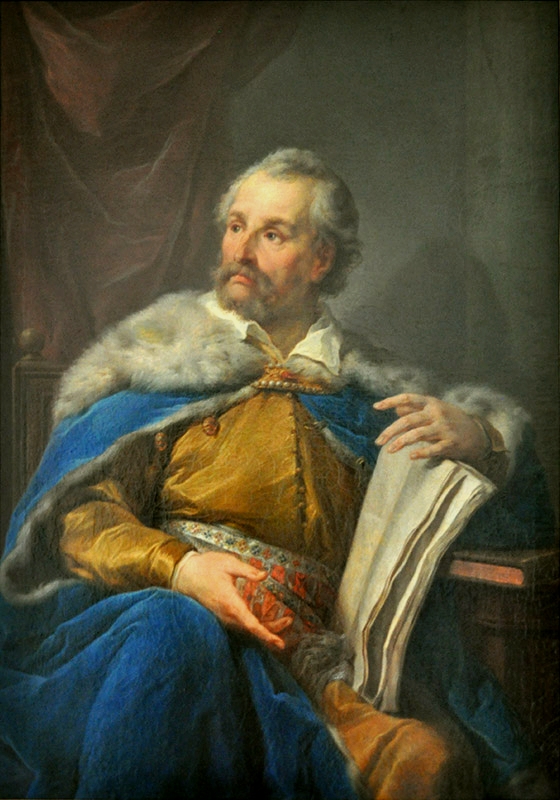|
Suszec
Suszec (German ''Sussetz'') is a village in Pszczyna County, Silesian Voivodeship, in southern Poland. It is the seat of the gmina (administrative district) called Gmina Suszec. It lies approximately north-west of Pszczyna and south-west of the regional capital Katowice. The village has a population of 4,491. In the area of the village there is the Parish of St. Stanislaus the Bishop and Martyr and Krupiński Coal Mine. In 2004. Suszec won the first edition of the competition "Beautiful Village of Silesian Voivodeship" in the category "most beautiful village". Name and crest The name of Suszec appeared in the list of Polish towns only one time. It comes from the word "suchy" (dry), as 300 years ago the neighboring areas were covered with swamps and bogs, and only the village of Suszec was a place acceptable for living and working. The branchy tree is a crest of Suszec - at least from the end the 18th century. On May 10, 1994 the Commune Council accepted and confirmed th ... [...More Info...] [...Related Items...] OR: [Wikipedia] [Google] [Baidu] |
Gmina Suszec
__NOTOC__ Gmina Suszec is a rural gmina (administrative district) in Pszczyna County, Silesian Voivodeship, in southern Poland. Its seat is the village of Suszec, which lies approximately north-west of Pszczyna and south-west of the regional capital Katowice. The gmina covers an area of , and as of 2019 its total population is 12,331. The gmina contains part of the protected area called Rudy Landscape Park. Villages Gmina Suszec contains the villages and settlements of Kobielice, Silesian Voivodeship, Kobielice, Kryry, Poland, Kryry, Mizerów, Radostowice, Rudziczka, Silesian Voivodeship, Rudziczka, and Suszec. Neighbouring gminas Gmina Suszec is bordered by the towns of Orzesze and Żory, and by the gminas of Gmina Kobiór, Kobiór, Gmina Pawłowice, Pawłowice and Gmina Pszczyna, Pszczyna. References {{Pszczyna County Gminas in Silesian Voivodeship, Suszec Pszczyna County ... [...More Info...] [...Related Items...] OR: [Wikipedia] [Google] [Baidu] |
Stary Suszec
Stary Suszec is a village in the administrative district of Gmina Suszec, within Pszczyna County, Silesian Voivodeship, in southern Poland. It lies approximately north-west of Suszec, north-west of Pszczyna, and south-west of the regional capital Katowice Katowice ( , , ; szl, Katowicy; german: Kattowitz, yi, קאַטעוויץ, Kattevitz) is the capital city of the Silesian Voivodeship in southern Poland and the central city of the Upper Silesian metropolitan area. It is the 11th most popul .... References Stary Suszec {{Pszczyna-geo-stub ... [...More Info...] [...Related Items...] OR: [Wikipedia] [Google] [Baidu] |
Krupiński Coal Mine
The Krupiński coal mine is a large mine in the south of Poland in Suszec, Silesian Voivodeship, 448 km south-west of the capital, Warsaw. Krupiński represents one of the largest coal reserve in Poland having estimated reserves of 34.8 million tonnes of coal Coal is a combustible black or brownish-black sedimentary rock, formed as rock strata called coal seams. Coal is mostly carbon with variable amounts of other elements, chiefly hydrogen, sulfur, oxygen, and nitrogen. Coal is formed when dea .... The annual coal production is around 3 million tonnes. The mine is based in Suszec, the deposits of which are located in the commune of Suszec, Żory and Orzesze in the Silesian Voivodeship. Employment at the end of 2011 amounted to 2819 employees. March 31, 2017 production in the mine was shut down and the plant was transferred to the Spółka Restrukturyzacji Kopalń in Bytom. This company is liquidating and managing the assets of liquidated mines. History The const ... [...More Info...] [...Related Items...] OR: [Wikipedia] [Google] [Baidu] |
Branica (Suszec)
Branica is a hamlet of the Suszec village in Poland, located by the provincial road No. 935 in the Silesian Voivodeship, in the Pszczyna County, in the Gmina Suszec. In 1975–1998, the hamlet administratively belonged to the Katowice Voivodeship. The followers of the Roman Catholic Church belong to the parish of St. Stanisław Bishop and Martyr ('' pol. Św. Stanisława Biskupa i Męczennika)'' in Suszec. There is also a primary school named after Janusz Korczak. Branicka Maryjka In Branica, by the Suszec-Kobiór road, there is a figurine representing Mary, mother of Jesus and Christ. See also * Battle of Pszczyna Battle of Pszczyna (Polish: ''Bitwa Pszczyńska'') refers to a series of battles between 1 and 2 September 1939 near the town of Pszczyna during the Invasion of Poland. The battle of Pszczyna formed part of the defensive Battle of the Border. Th ... References Villages in Pszczyna County {{Pszczyna-geo-stub ... [...More Info...] [...Related Items...] OR: [Wikipedia] [Google] [Baidu] |
Pszczyna County
__NOTOC__ Pszczyna County ( pl, powiat pszczyński) is a unit of territorial administration and local government (powiat) in Silesian Voivodeship, southern Poland. It came into being on January 1, 1999, as a result of the Polish local government reforms passed in 1998. Its administrative seat and only town is Pszczyna, which lies south of the regional capital Katowice. The county covers an area of . As of 2019 its total population is 111,324, out of which the population of Pszczyna is 25,823 and the rural population is 85,501. Neighbouring counties Pszczyna County is bordered by Mikołów County, the city of Tychy and Bieruń-Lędziny County to the north, Oświęcim County to the east, Bielsko County to the south, Cieszyn County to the south-west, and the cities of Jastrzębie-Zdrój and Żory to the west. Administrative division The county is subdivided into six gminas (one urban-rural and five rural). These are listed in the following table, in descending order of popula ... [...More Info...] [...Related Items...] OR: [Wikipedia] [Google] [Baidu] |
Duchy Of Pless
The Duchy of Pless (or the ''Duchy of Pszczyna'',Julian Janczakof Pszczyna" (in) Zarys dziejów kartografii śląskiej do końca XVIII wieku''(An outline for the History of Cartography till the End of the 18th century)'', Opole: 1976, Polish Academy of Sciences, Warsaw: Institute of History of Science, Education and Technology, 1993, . This contains sections in several European languages, including ; Accessed 2008-13-01. ^ Tadeusz WalichnowskiTerritorial Provenance of Archival Documents in International Relations(''Przynaleznosc terytorialna archiwaliow Panstwa Polskiego w stosunkach miedzynarodowych''), Polish Scientific Publishers, Warsaw, 1977. Polish State Archives. ^''Nagel's Encyclopedia Guide, Poland'' by Nagel Publishers, 1989, 399 pages, . Accessed 2008-13-01. german: Herzogtum Pleß, pl, Księstwo Pszczyńskie) was a Duchy of Silesia, with its capital at Pless (present-day Pszczyna, Poland). History After the fragmentation of the Polish kingdom upon the 1138 Testamen ... [...More Info...] [...Related Items...] OR: [Wikipedia] [Google] [Baidu] |
The Parish Of St
''The'' () is a grammatical article in English, denoting persons or things that are already or about to be mentioned, under discussion, implied or otherwise presumed familiar to listeners, readers, or speakers. It is the definite article in English. ''The'' is the most frequently used word in the English language; studies and analyses of texts have found it to account for seven percent of all printed English-language words. It is derived from gendered articles in Old English which combined in Middle English and now has a single form used with nouns of any gender. The word can be used with both singular and plural nouns, and with a noun that starts with any letter. This is different from many other languages, which have different forms of the definite article for different genders or numbers. Pronunciation In most dialects, "the" is pronounced as (with the voiced dental fricative followed by a schwa) when followed by a consonant sound, and as (homophone of the archaic pr ... [...More Info...] [...Related Items...] OR: [Wikipedia] [Google] [Baidu] |
Casimir II, Duke Of Cieszyn
Casimir II of Cieszyn ( pl, Kazimierz, cs, Kazimír; – 13 December 1528) was a Duke of Cieszyn since 1477, ruler over Koźle during 1479–1509, since 1493 ruler over Wołów, over Pszczyna during 1498–1517, from 1506 over Opava, Duke of Głogów since 1506 (for life). Also he was Landeshauptmann General of Silesia during 1497–1504 and 1507–1517, since 1517 until his death, Landeshauptmann (starosta generalny) over the Upper Silesia. He was the only son of Bolesław II, Duke of Cieszyn, by his wife Anna, daughter of Ivan Vladimirovich, Prince of Bielsk. Life After the early death of his father in 1452, Casimir II was raised by his uncle Przemysław II, who gave him the town of Bielsko and surrounding villages in 1460. Casimir II's first political intervention was by 1471, when he supported King Władysław II Jagiellon during his conflicts with the Bohemian nobility. Four years later (in 1475), Casimir II he attended to the marriage of Princess Hedwig of Poland (King ... [...More Info...] [...Related Items...] OR: [Wikipedia] [Google] [Baidu] |
Magnate
The magnate term, from the late Latin ''magnas'', a great man, itself from Latin ''magnus'', "great", means a man from the higher nobility, a man who belongs to the high office-holders, or a man in a high social position, by birth, wealth or other qualities in Western Christian countries since the medieval period. It also includes the members of the higher clergy, such as bishops, archbishops and cardinals. In reference to the medieval, the term is often used to distinguish higher territorial landowners and warlords, such as counts, earls, dukes, and territorial-princes from the baronage, and in Poland for the richest ''szlachta''. England In England, the magnate class went through a change in the later Middle Ages. It had previously consisted of all tenants-in-chief of the crown, a group of more than a hundred families. The emergence of Parliament led to the establishment of a parliamentary peerage that received personal summons, rarely more than sixty families. A similar cl ... [...More Info...] [...Related Items...] OR: [Wikipedia] [Google] [Baidu] |
State Country
State country (german: Freie Standesherrschaft; cs, stavovské panství; pl, państwo stanowe) was a unit of administrative and territorial division in the Bohemian crown lands of Silesia and Upper Lusatia, existing from 15th to 18th centuries. These estates were exempt from feudal tenure by privilege of the Bohemian kings. Some of the state countries were highly autonomous, they had their own legal code and their lords were vassals of the king himself, not of the local dukes or princes. Silesia The state countries were formed from former Duchies of Silesia, whose ruling dynasties - branches of the Silesian Piasts (see Dukes of Silesia) - had died out. As a ceased fief their possessions would fall to the Bohemian crown and sometimes were granted to lords of lesser nobility not affiliated with the ducal Piast family. In 1492 King Vladislas II Jagiellon of Bohemia established three state countries within the Duchy of Oleśnica (''Oels''), after Duke Konrad X the White had died w ... [...More Info...] [...Related Items...] OR: [Wikipedia] [Google] [Baidu] |
Roman Catholic Archdiocese Of Kraków
The Archdiocese of Kraków ( la, Cracovien(sis), pl, Archidiecezja krakowska) is an archdiocese located in the city of Kraków in Poland. As of 2013 weekly mass attendance was 51.3% of the population (fourth highest in Poland after the dioceses of: Tarnów-69.0%, Rzeszów-64.1% and Przemyśl-58.8%). History *1000: Established as Diocese of Kraków from the Diocese of Poznań *October 28, 1925: Promoted as Metropolitan Archdiocese of Kraków Special churches *Minor Basilicas: **Basilica of the Body and Blood of Christ, Kazimierz **Bazylika Najświętszego Serca Pana Jezusa, Kraków **Bazylika Nawiedzenia NMP, Kraków **Bazylika Ofiarowania Najświętszej Maryi Panny, Wadowice **Bazylika św. Floriana, Kraków (Kleparz) **Bazylika św. Franciszka z Asyżu OO. Franciszkanów, Kraków **Bazylika Trójcy Świętej OO. Dominikanów, Kraków **Bazylika Wniebowzięcia Najświętszej Marii Panny (Bazylika Mariacka), Kraków **Sanktuarium Pasyjno - Maryjne, Kalwaria Zebrzydowska *Minor ... [...More Info...] [...Related Items...] OR: [Wikipedia] [Google] [Baidu] |


.png)
